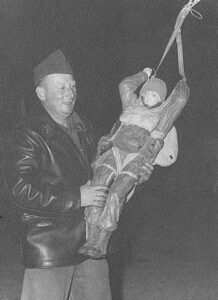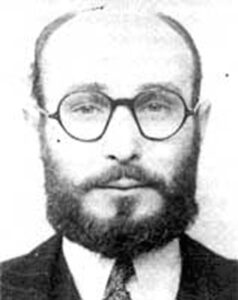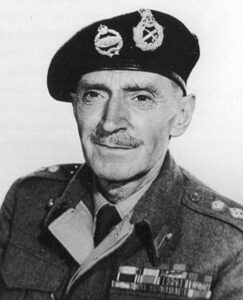

“In wartime, truth is so precious that she should always be attended by a bodyguard of lies.”
Winston Churchill
One of my favorite movies set in World War II is “The Man Who Never Was” (1966) starring Clifton Webb, Gloria Grahame.
In 1942, Adolf Hitler ordered the construction of the Atlantic Wall, a series of coastal defenses that stretched from the edge of the Arctic Circle down to the France-Spain border. The Germans knew an Allied invasion on Western Europe would eventually come, they just didn’t know exactly where and when.
The film relates the true story about Royal Navy Lieutenant Commander Ewen Montagu (Webb) who, in 1943, hatched an idea intended to deceive the Nazis about the much-anticipated invasion by the Allies of Southern Europe. The idea was to release a corpse with a fictional identity off the coast of Spain, where strong currents will carry it ashore near where a known German agent operated. The non-existent Royal Marine courier, “Major William Martin” would appear to be a plane crash victim carrying documents about an upcoming Allied invasion of German-occupied Greece, rather than Sicily, the more obvious target. Montagu’s plan (called Operation Mincement) was approved by Winston Churchill. The intricate plan was amazingly successful.


On 6 June 1944, the largest seaborne invasion in military history heralded the start of Operation Overlord. D-Day kicked off the Western Allies push to Berlin and a large part of its success depended on German ignorance about its exact location, date and time.
Up to a year before the Allies stepped foot on the Normandy beaches, a deception campaign was being formulated. It aimed to throw German High Command off about exactly how Winston Churchill and Franklin D. Roosevelt planned to penetrate Hitler’s Fortress Europe. Its name was Operation Bodyguard and the secret department known as The London Controlling Centre (LCS) mapped out its finer details.
The Allies knew that German reconnaissance would pick up any build-up of forces in England prior to an invasion, so the main aim of Bodyguard was to convince Hitler an attack was coming later than it was actually planned and at a location different from Normandy.
Bodyguard was sub-divided into a series of operations. The most complex and most significant was Operation Fortitude. Fortitude consisted of two parts, North and South; North aimed to convince the Germans that the Allied invasion would come via Norway whilst South planned to convince them it was coming via France at the Pas de Calais region, the shortest and most obvious route both across the Channel and to Germany.
A variety of deceptive methods were employed to ensure Fortitude South achieved its goals. First was Operation Quicksilver, which saw the creation of a completely fictional army known as the First U.S. Army Group (FUSAG). This army was supposedly stationed in south-east England under the command U.S. General George S. Patton. Patton was the general most feared and respected by the German High Command and therefore the one who would most likely be put in charge of an invasion force.


To aid in the subterfuge, fake military buildings were created, while inflatable tanks and dummy landing craft were deployed across locations in the south-east. To further cement the ruse, Patton was photographed touring these fake FUSAG camps
The idea was to convince Hitler that the Allies had a larger force than they actually did and that force was supposedly targeting the Calais region, masking the Allies actual invasion preparations as well as convincing the Germans that any attack at Normandy was most likely a diversion from the ‘real’ attack.
Fake radio traffic was sent over the airwaves simulating the communications of FUSAG and detailing the Allies so-called plans to advance on the Calais region sometime in mid-July 1944. Since the Allies had cracked the German Enigma code, they could track and monitor the success of the false information they were handing the enemy.
Under the Double Cross System (German spies “turned” by MI5), Nazi agents in Britain fed back information supporting the fake radio traffic. The most famous of these double agents was Juan Pujol Garcia, a Spanish national supposedly working for German intelligence but who was, in fact, loyal to the Allies. The British gave him the codename “Garbo,” the Germans referred to him as “Alaric.”
Garcia built a fictitious spy network in Britain containing 27 agents, none of whom were real. His German handlers were so impressed with his work he was rewarded the Iron Cross. The credibility that German High Command gave Garcia’s information meant he was able to convincingly sell the Allied deception to them, leaving the Germans completely unaware they were being manipulated.
The extent of the Allied campaign of deceit was unlike anything seen before. They even employed the services of Australian actor M.E. Clifton James who had a remarkable likeness to British General Bernard Montgomery. James was sent on a tour of Gibraltar and North Africa in late May 1944, attempting to convince the Germans that no attack could be imminent if ‘Monty’ was out of the country.
In the build-up the D-Day, Allied bombing also played a key role in fooling the enemy. While bombing under the Transportation Plan campaign intended to cut off Normandy from being supplied by German reinforcements. Areas near the Calais region were also targeted to convince the enemy that was the true target for the invasion.
To help draw further German strength away from the Normandy area, around 400 three-foot-tall dummies known as “Ruperts” (also called “Paradummies) were parachuted into areas East and West of Normandy under Operation Titanic on the night of 5 June. Ten members of the SAS jumped with the Ruperts and operated loudspeakers on the ground, blasting out sounds of gunfire and men shouting. The idea was to simulate an airborne invasion and distract German forces from the imminent attack.
As D-Day kicked off the deceptions were far from over. Allied aircraft dropped aluminum foil, known as Window, attempting to fool German radar that a large force was heading for the Calais area. Small boats and aircraft headed in the same direction to further sell the idea.
Even after the day was done, Garcia continued to feed information back to his German handlers that Normandy was a “red herring” and the larger force under Patton was still to strike at the Calais region. Hitler was so convinced of the existence of this ghost army that he refused to send reinforcements to the Normandy area for seven weeks. The Allies had hoped their decoy plans might buy them two weeks, seven was unthinkable.
Operation Fortitude North had conducted a similar campaign of deception, focusing mainly on fake radio chatter and double agents to paint a picture of a sizeable force building in the north of Britain. Whilst Hitler did not completely believe the invasion was coming from that direction, he still retained twelve army divisions there just in case. Every German soldier away from the Normandy region on D-Day was one fewer to resist the invading Allies.
The huge success of Operations Mincemeat, Bodyguard, and Fortitude saved countless lives and provided the Allies with a foothold in Europe. In just under a year after the D-Day landings, Hitler would be dead and the war over.
By the way, “The Man Who Never Was” is occasionally shown on Television/Cable and is also available on DVD. I highly recommend it!
No Comments
Leave a comment Cancel